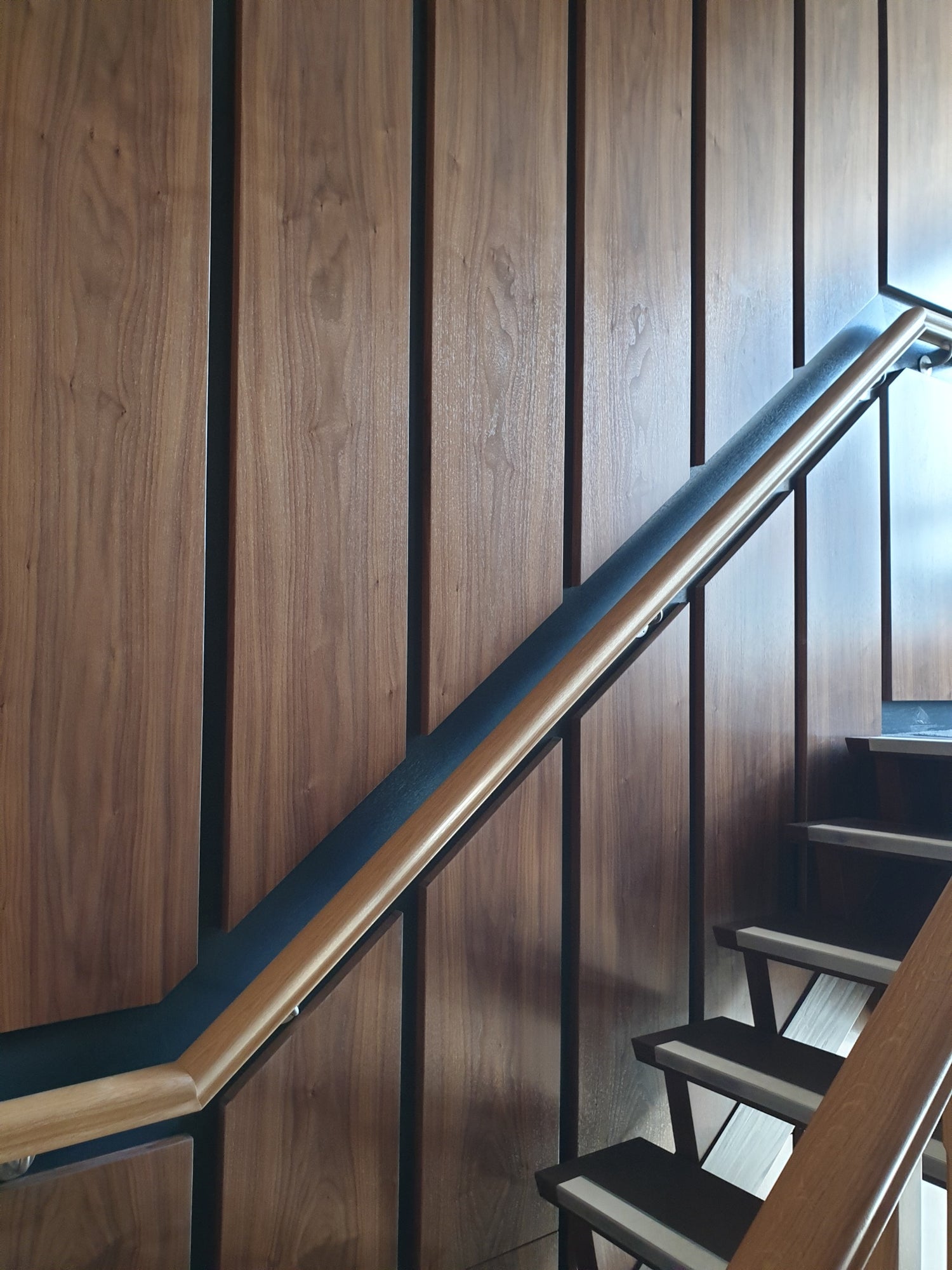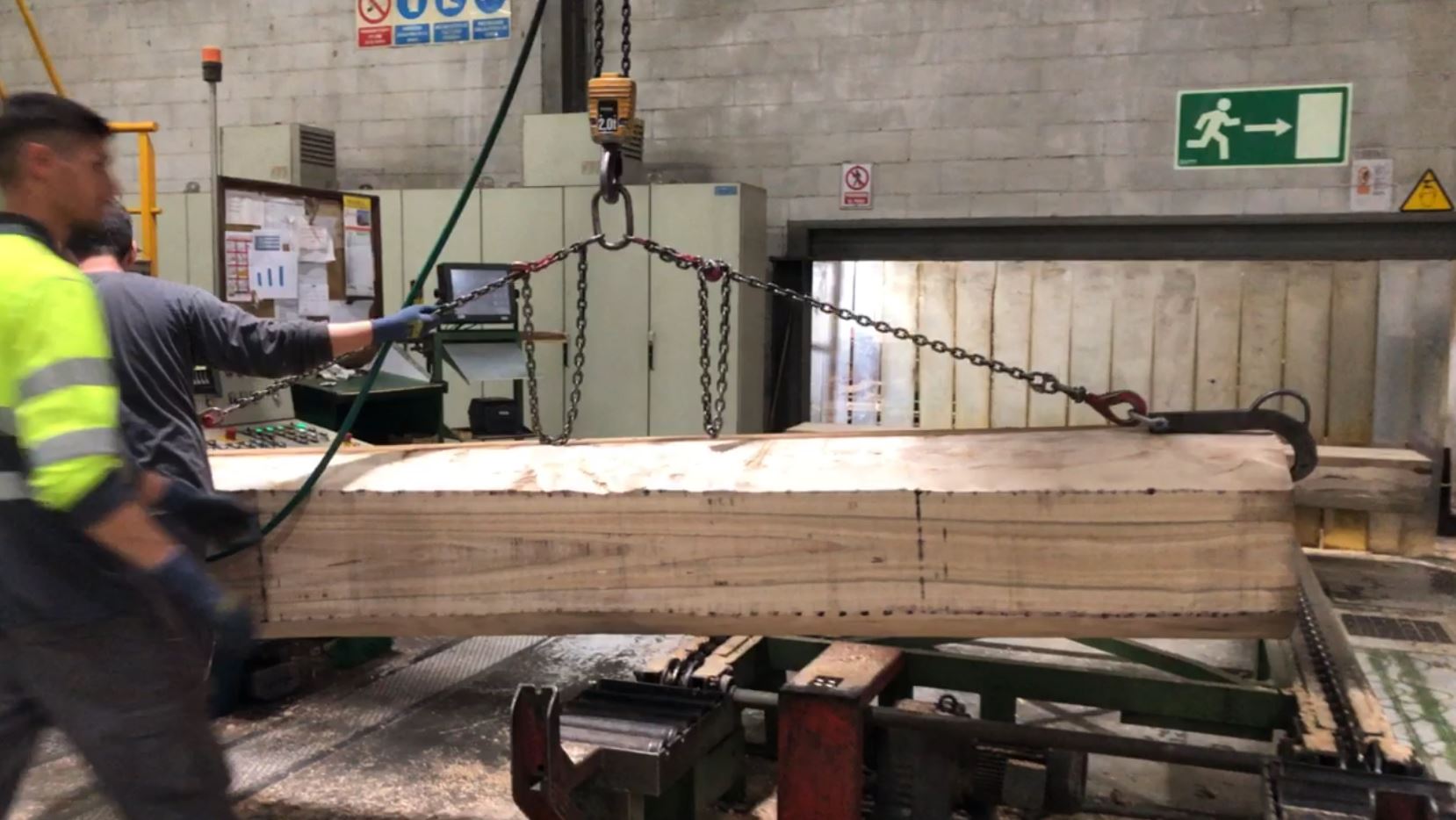Using wood veneer instead of solid timber has several benefits, depending on the specific application and requirements. Here are some advantages of using wood veneer:
1. Cost-Effective: Wood veneer is typically more affordable than solid timber. It allows you to achieve the look and feel of expensive hardwoods without the same high material cost.
2. Sustainability: Veneer is an environmentally friendly option as it maximizes the use of a single log or timber, reducing waste. It's often sourced from sustainable forests, making it a responsible choice for those concerned about the environment.
3. Stability: Solid wood can be susceptible to warping, splitting, and shrinking due to changes in temperature and humidity. Wood veneer is more stable and less prone to these issues because it's bonded to a stable substrate, such as plywood or MDF.
4. Versatility: Veneer allows for greater design flexibility. It can be used to cover a wide range of substrates, including curved surfaces, which can be challenging with solid wood.
5. Uniformity: Veneer provides a consistent appearance, with fewer natural imperfections, knots, and grain variations compared to solid timber. This makes it easier to achieve a uniform look in your projects.
6. Lightweight: Veneered panels are generally lighter than solid wood, making them easier to transport and handle.
7. Larger Surface Coverage: Veneer sheets can cover larger areas without the need for large, solid wood panels, which can be heavy and expensive.
8. Wide Variety of Species and Finishes: Wood veneer comes in a vast array of wood species and finishes, allowing you to choose the appearance that best suits your design.
9. Sustainability Certification: Many wood veneer suppliers offer veneers that are certified by organizations like the Forest Stewardship Council (FSC), indicating responsible and sustainable sourcing.
10. Customization: Veneer can be easily stained, dyed, or finished to achieve a desired color and appearance. This customization can be more challenging with solid timber.
It's important to note that the choice between wood veneer and solid timber depends on the specific application, budget, and aesthetic preferences. While veneer offers several advantages, there are situations where solid wood may be the preferred option, especially when extreme durability or thickness is required.
1. Cost-Effective: Wood veneer is typically more affordable than solid timber. It allows you to achieve the look and feel of expensive hardwoods without the same high material cost.
2. Sustainability: Veneer is an environmentally friendly option as it maximizes the use of a single log or timber, reducing waste. It's often sourced from sustainable forests, making it a responsible choice for those concerned about the environment.
3. Stability: Solid wood can be susceptible to warping, splitting, and shrinking due to changes in temperature and humidity. Wood veneer is more stable and less prone to these issues because it's bonded to a stable substrate, such as plywood or MDF.
4. Versatility: Veneer allows for greater design flexibility. It can be used to cover a wide range of substrates, including curved surfaces, which can be challenging with solid wood.
5. Uniformity: Veneer provides a consistent appearance, with fewer natural imperfections, knots, and grain variations compared to solid timber. This makes it easier to achieve a uniform look in your projects.
6. Lightweight: Veneered panels are generally lighter than solid wood, making them easier to transport and handle.
7. Larger Surface Coverage: Veneer sheets can cover larger areas without the need for large, solid wood panels, which can be heavy and expensive.
8. Wide Variety of Species and Finishes: Wood veneer comes in a vast array of wood species and finishes, allowing you to choose the appearance that best suits your design.
9. Sustainability Certification: Many wood veneer suppliers offer veneers that are certified by organizations like the Forest Stewardship Council (FSC), indicating responsible and sustainable sourcing.
10. Customization: Veneer can be easily stained, dyed, or finished to achieve a desired color and appearance. This customization can be more challenging with solid timber.
It's important to note that the choice between wood veneer and solid timber depends on the specific application, budget, and aesthetic preferences. While veneer offers several advantages, there are situations where solid wood may be the preferred option, especially when extreme durability or thickness is required.





Leave a comment
All comments are moderated before being published.
This site is protected by reCAPTCHA and the Google Privacy Policy and Terms of Service apply.